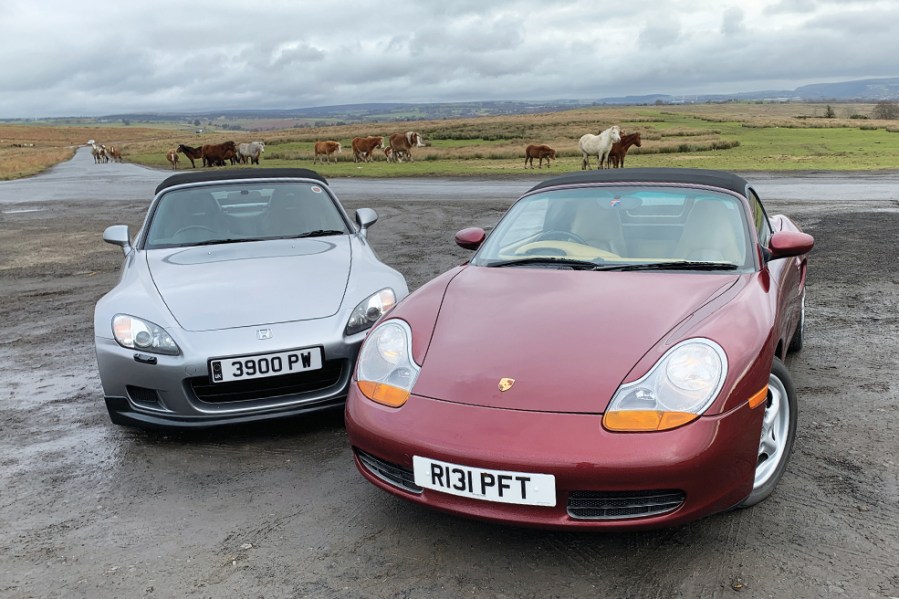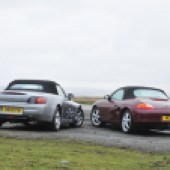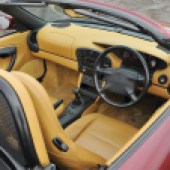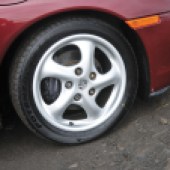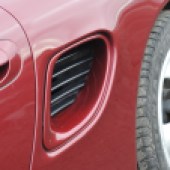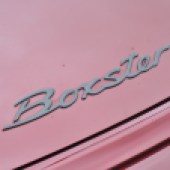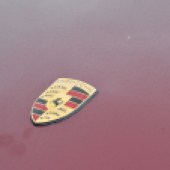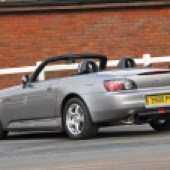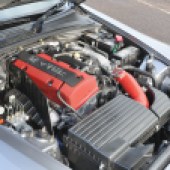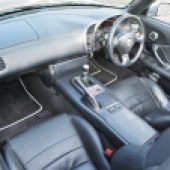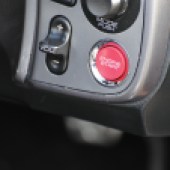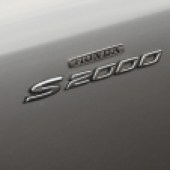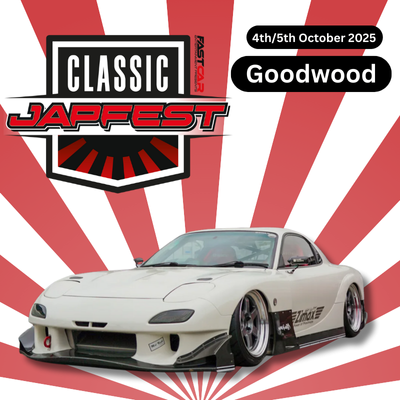We try to decide between two very different ways of creating a 150mph modern classic roadster – the Porsche Boxster and Honda S2000
On the face of it, here we have two very similar propositions: both two-seater sports cars, both packing over 200bhp and with the potential to crack 150mph.
The practical reality though is that in many ways they couldn’t be more different, both in their background and in the way they go about getting to that magical ton-and-a-half: one was a calculated attempt to extend the appeal of the Porsche brand downwards into a more affordable market, while the other was Honda’s single-minded celebration of its engineering prowess.
Despite that though, it’s a fair bet that anyone looking for a credible modern classic roadster with sufficient pace to make it a step up from the likes of the MX-5 may well have both of these on their shopping list. Here, we try to decide which is the best modern classic ownership proposition.
Porsche Boxster
For many readers, this comparison is over before it’s even begun: for anyone suddenly priced out of the 911 the Porsche Boxster represents an affordable way to achieve a dream. Growing up with air-cooled VWs as I did myself, a six-cylinder Porsche was always an ultimate goal and to discover that it was a realistic proposition was a delight.
It was this thinking which informed Porsche’s decision to produce the car in the first place: declining sales in the crucial US market combined during the mid 1990s with financial pressures back home generated by the newly reunified German economy to see profits falling and workers being laid off.
Porsche’s position wasn’t helped by the 911 looking increasingly antiquated. Despite an extensive update into the 993 generation in 1994, the car’s bodywork was still based largely on the structure of the 1964 original and although the air-cooled six gave the car its signature soundtrack, it was coming to the limits of its development.
At the other end of the slender range, the entry-level Porsche of the time was the 944, itself descended from the VW/Porsche 924 of 1976. Alongside these, the 928 was still plugging along, expensive both to make and to buy and never a big seller despite its capability.

Heads were duly scratched in Stuttgart and a two-part survival plan was worked up. Firstly the 944 would be updated into the 968, Porsche claiming the car to be 80 per cent new, which would hold the fort while a new generation of affordable Porsche would be developed.
Secondly, a new 911 would be developed, but would share as much as possible with the new entry-level car – specifically, its front end structure. After all, this would be the first time in Porsche’s history that its cheaper model hadn’t been developed in conjunction with the Volkswagen group and so resources were correspondingly tighter.
Given project name 986, the new car was envisaged as being smaller than the 911 and since it had been decided that it would be a strict two-seater, the opportunity was there to retain a rearwards engine position and so give the new car a selling point setting it apart from the likes of the MX-5 or SLK.
The clever bit was in deciding to rotate the engine and transaxle through 180 degrees to make the car mid-engined as opposed to rear-engined, which gave the design the required touch of the exotic, yet avoided the 911’s tricky handling.
Early prototypes used a four-cylinder powerplant but as the project neared completion it was decided to go for a six-cylinder unit both to give the car a clear Porsche character and also to lift it further above the lesser-branded competition. It also made sound financial sense, since the engine was to be shared with the 911 being developed in parallel.
This was a big job, since even Porsche had been forced to admit that ducting ambient air over the cylinders could no longer cut it from a noise and emissions point of view and so the Porsche flat six was to become water-cooled for the first time. Using the same engine in both models offered production economies and avoided the prospect of the four-pot motor being compared to a Subaru. The Boxster would initially use a 2.5-litre version of the new engine, good for 204bhp and would also be offered with Porsche’s newly developed Tiptronic automatic as an option. Although hyped as revolutionary, the Tiptroic was in fact a conventional torque converter automatic with switches on gearlever and steering wheel to command the unit’s ECU to change gear manually. In fact it was nothing new – BMW tuner Hartge had been offering a similar system for years – but it did capture the imagination and the availability of a self-shifting box did extend the appeal of the car.
Styled by in-house Porsche designer Grant Larson with clever echoes of the 550 Spyder and 718RSK, the concept was given the name Boxster – combining ‘roadster’ and ‘boxer’ – and was displayed as a concept at the Detroit show in January 1993. Like the Audi TT, the design was very little altered in the journey from concept to production, although just like the Audi it did gain a stubby rear spoiler to compensate for its lack of downforce at high speed.
The body itself used a front-end structure which was almost identical to the 911 which would be unveiled later the same year, with high-strength steel used in critical areas, the panels provided by BMW’s Eisenach plant which had the ability to press the high-strength metal.
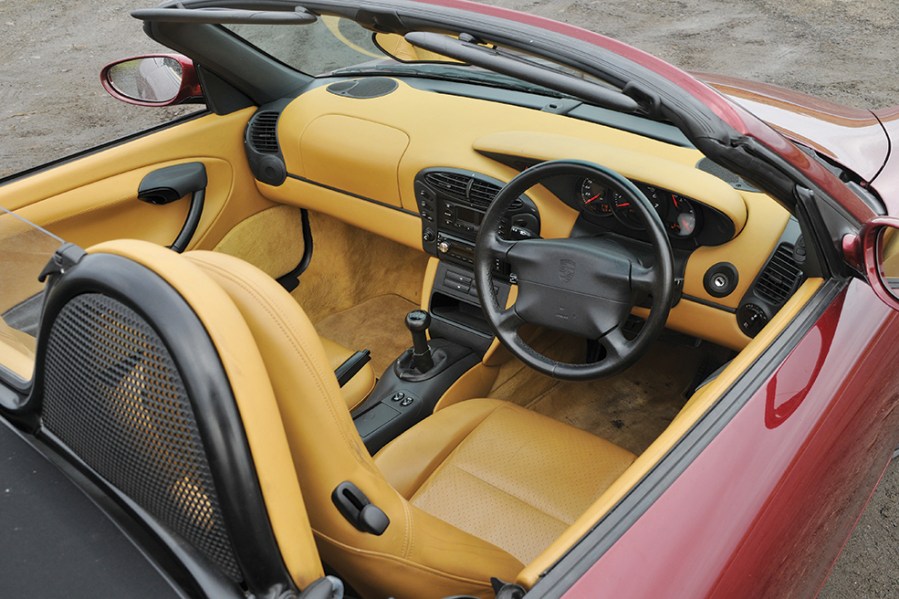
The Boxster was offered only as an open car and its body engineering used the roll hoops as an integral part of the structure, while the roof itself was engineered to fold to a very compact size – necessary to fold flush above the high rear deck above the engine. With no less than 12 motors, it could be raised in just 12 seconds and needed no fiddly cover to make it look neat.
This kind of engineering was perhaps nothing less than was expected from Porsche, but the masterstroke was in its pricing. In the US market, it was positioned at a shade under $40,000 – $39,950 to be precise – and it would go on to outsell the 911 comprehensively. Here in the UK where the car was launched in October 1996, it wasn’t quite the affordable car American buyers enjoyed, but it still put a ‘proper’ Porsche within reach of many. At £39,210 it was a massive £10,000 cheaper than the £49,965 Jaguar XK8 and even undercut the BMW M3 coupe at £40,130. Its nearest competitor was perhaps the £31,601 Mercedes SLK, offered initially only in four-cylinder SLK230 form and with an automatic gearbox. The Boxster also had the build quality to back up the brand, with the car finished to the usual Porsche standards which put it far ahead of both Mercedes and Jaguars of the era.
In manual form, the Boxster had the pace to keep up with the competition, too: its 0-60mph time was just half a second adrift of the Jaguar and a second ahead of the Mercedes, although the M3 ‘Evo’ did have it beaten. Either way, it was in a different world from the likes of the Mazda and the four-cylinder BMW Z3, although the six-pot Z3 2.8i launched a year later would offer a fairer alternative.
It’s a manual car we have here and one of the nicer early Boxsters out there, too. Regular readers will no doubt be aware that you can pick up a road-legal example for as little as £3000 these days, but popular opinion suggests that you really shouldn’t, unless you want a project and have a well-equipped workshop to hand. Indeed, as Paiul Watkins of Freewheeler who brought this car along to our photoshoot suggests, it will cost the difference to bring a really cheap example up to the standards of a nicer example and possibly more.
In fact, sampling a well presented Boxster like this, you start wondering why anyone would have chosen to splash the extra £10,200 on the entry-level 911 Carrera. To my mind the styling is better proportioned than the rear-engined car, the Boxster’s interior is more spacious in some ways and the twin luggage boots of the mid-engined car make it generally more practical. Yes the 911 is in theory a four-seater, but in reality the back seats are for occasional lift-home-from-the-pub use for anyone larger than toddler-sized.
Let’s be honest though, boot space isn’t going to be uppermost in your mind when you’ve already decided on a two-seat sports car and when it comes to the driving experience, the Boxster is real deal Porsche. From the moment you turn the key and hear the gruff flat-six beat you know you’re in something special and the view from the driver’s seat reinforces that. The overlapping dials with their script font scream 911, as does the overall design of the dashboard which is all but identical to the 996-generation 911. High quality materials mean even the earliest examples have worn the years well and the plastics and leather still look presentable.
Mindful of the fact that the supposedly entry-level car would be overlapping the bottom end of the 911 market, Porsche offered the chance to spend the difference on options and this example is more lavishly trimmed than many, featuring the extended Savannah leather, electric seats and factory air conditioning.
As expected from a car which was supposed to extend the brand’s appeal, the Boxster is a much easier car to drive than a classic 911, with a light clutch action and an easy cable-operated gearshift to the Audi-sourced five-speed. Together with a longish throttle pedal travel, it makes the manual car easy to drive in traffic and for a car with its exotic looks and high performance, it didn’t present an intimidating prospect to those trading up from the likes of a Golf GTI.
The 2.5 offers a useful 240lb ft at a lowish 4500rpm which together with the manual car’s 1290kg kerb weight translates to a muscular feel. it’s happy to pull 30mph in fifth gear, while extending it towards the 6500rpm redline will release that 911 soundtrack despite the quietening effects of water cooling.
Without an engine over the front wheels, the steering is wonderfully communicative and despite the mid-engined layout the Boxster is easy to drive hard. It feels reassuringly stable at speed and its compact size makes it easy to place on the road, while the suspension tuning is largely benign. Really push hard in a Boxster and you’ll find it nicely balanced, tending towards gradually building understeer rather than the snappy behaviour of many mid-engined cars.
And when the red mist has subsided, you can polish the Porsche crest you never thought you’d be able to afford. Does that make it the ultimate sensible exotic… or perhaps too sensible?
Honda S2000
It’s not often you get a car this side of a Ferrari which could be said to make a Porsche look staid, but the Honda S2000 is one of them. Conceived by Honda as a celebration of its engineering prowess to celebrate half a century in the car business, its development took a very different path from the Boxster.
Rather than a means of extending a brand downwards and achieving economies by component sharing, the S2000 was driven by the engineers rather than the market or production accountants and shares virtually nothing with other Hondas.
It was this steely focus on performance, weight-saving and efficiency which meant a six-cylinder engine was out of the question, Honda employing its traditional recipe of a multi-valve four-cylinder instead. Honda had traditionally rejected forced induction in favour of its trick VTEC variable cam timing set-up which meant that its 240 bhp would be achieved without the use of a turbocharger. Achieving that kind of power from a normally aspirated 2.0-litre which could be driven comfortably on the road was a tall order and it’s the engine which is the heart of the S2000.
Many of the design team were plucked from Honda’s F1 programme and since the route to increased power without resorting to turbocharging required correspondingly higher engine speeds, much work concentrated on friction reduction and reduced inertial weight. A relatively short-stroke design running 11:1 compression, the engine uses low-friction valve gear with roller rockers, a special low-friction coating on certain surfaces and of course the VTEC system to permit an astonishing 9000rpm redline. Motorsport-inspired detail touches are evident throughout the design, from the straight-port inlet manifold to the low-friction oil pump and stiffening ladder bolted between block and sump.
The result feels like a race engine and although it’s docile enough to be happy trundling around in urban traffic, it doesn’t show its talents until there’s at least 5800rpm showing on the digital dials, since that’s when the VTEC changeover happens.
Driving through a six-speed box with a Torsen LSD in the rear axle, the F20C engine is mounted well back in the chassis, the rear of the block almost under the screen and Honda claiming a 50:50 weight distribution. The body structure is designed as a ‘high X-bone frame’ which translates to it being designed from scratch as an open car using a deep centre tunnel and sills, with all the rigidity benefits that confers. Like the Porsche, the roll hoops behind the seats are built in as part of the structure.
Its styling meanwhile couldn’t be more Japanese, the thrusting shape ignoring the Porsche’s retro touches in favour of a very modern aggression. As soon as you climb abord the Honda it feels smaller than the Porsche, more focused sports car and less of a tourer, something reinforced by the racy ‘engine start’ button, its glamour rather diminished by needing to turn a conventional ignition key lock first.
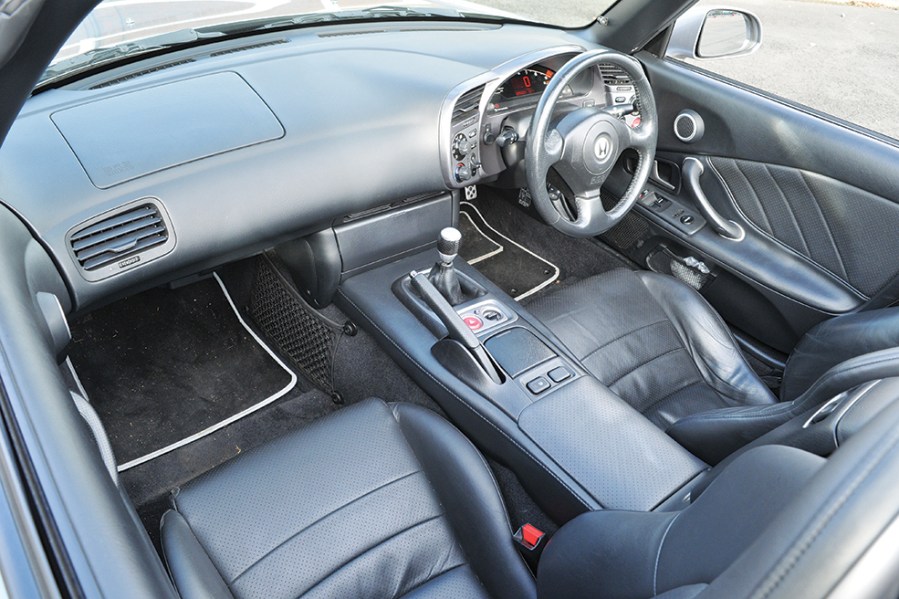
The sound which greets you is a world away from the Porsche’s muscular six-cylinder idle but the hard-edged buzz still hints at its potential. Throttle response is razor sharp compared to the bigger Porsche engine and although it’s as easy to drive as a basic Civic, the S2000 feels like a proper sports car of the old school. The gearlever is mounted high on the tunnel and there’s just 40mm movement between ratios, which is just as well considering how often you’ll be stirring the six speeds.
Newcomers to the S2000 could be forgiven for wondering that all the fuss is about, but to get the best from the car you really need to throw away a lifetime’s worth of mechanical sympathy. At engine speeds where the Boxster driver is already thinking about an upshift, the Honda engine is just getting into its stride and there must be many owners who have ever experienced its full potential. “Drive it like you stole it” was the instruction I was given on my first acquaintance with a Honda VTEC and it applies to the S2000 more than any other: wind it out to 8000rpm and the surge as the VTEC does its stuff is as sudden as a turbo coming on boost.
And the thing is with these engines, you can do that time and time again without it breaking, such is Honda’s reputation for reliability. Popular opinion suggests that cars driven in the VTEC zone constantly will use a touch of oil but it’s addictive stuff. Of course, driving the car as if you’ve a pair of committed blue lights flashing in the mirror might be the way to get the best from the peaky engine, it’s also the best way to end up the wrong side of the hedge. The S2000’s fiery nature has won it a reputation for being tricky to master in the handling stakes, although that’s to some extent exaggerated. The chassis is pure Honda, with double wishbones throughout and is beautifully balanced with it, but there’s no
getting away from the fact that these cars can be twitchy, especially in the wet. The handling revisions for the 2003-onwards cars did tame things to some extent with revised suspension settings, but traction control wasn’t offered until the car was facelifted in 2007 into the AP2 model.
The upshot is that the S2000 does need to be treated with respect, especially in the wet, even if you do fancy yourself as an opposite-lock hero. Drive sensibly though and it’s a rewarding prospect with only the odd moment on a wet roundabout to keep you awake.
The rest of the ownership prospect is the equal of the Porsche, with a powerful heater, a nicely screwed together interior and a roof which motors up and down just as quickly. And that doesn’t make it at all easy to choose between them.
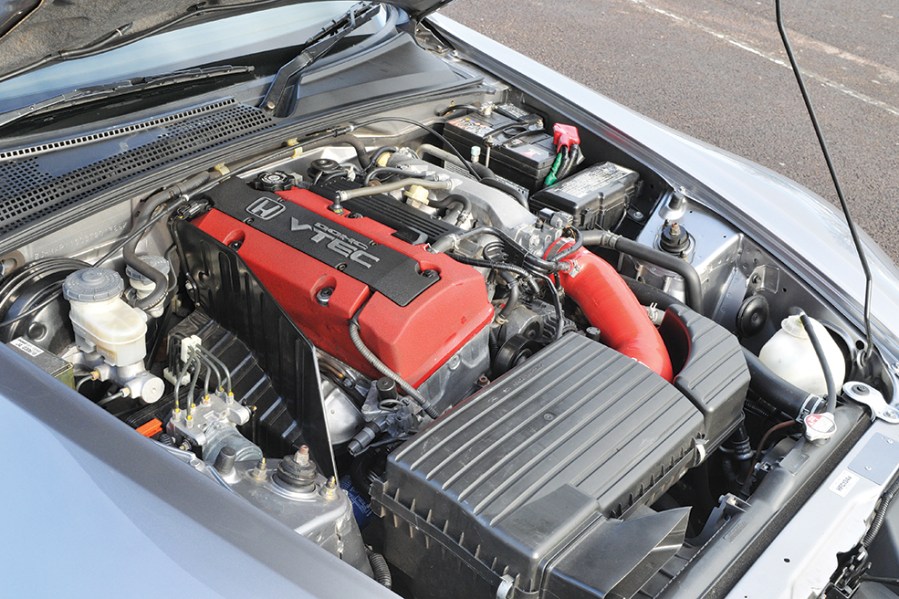
Porsche Boxster vs Honda S2000: our verdict
For those with their heart set on a Porsche, the more relevant choice is perhaps between buying from the top-end of the Boxster market or taking a chance on a cheaper 996 generation 911, but for others it’s not so clear-cut. Nobody ever expected a Porsche to be rendered the sensible choice without involving anything big-budget and Italian, but the S2000 makes it seem like the safe bet – and after the high-revving, single-minded Honda it can even seem a touch boring.
But the Honda S2000 isn’t for everybody and it’s fair to say that the Porsche’s talents are more evenly spread, making it the more practical choice in pretty much every respect.
So my advice is to go for the Porsche Boxster then, the surprisingly affordable way to get yourself into a proper flat-six Porsche…or is it? Having grown up with air-cooled Beetles, it was after setting out shopping for a Boxster that I came home with the Honda in our photos – and it’s not a decision I’ve regretted. Sometimes it pays to break out of your comfort zone.

